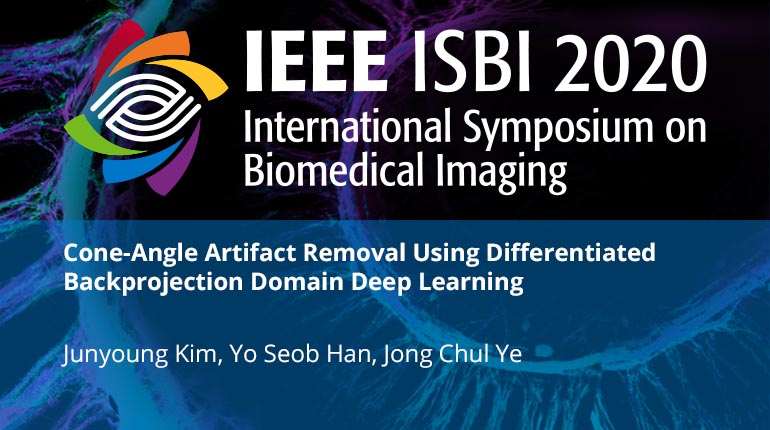
Already purchased this program?
Login to View
This video program is a part of the Premium package:
Cone-Angle Artifact Removal Using Differentiated Backprojection Domain Deep Learning
- IEEE MemberUS $11.00
- Society MemberUS $0.00
- IEEE Student MemberUS $11.00
- Non-IEEE MemberUS $15.00
Cone-Angle Artifact Removal Using Differentiated Backprojection Domain Deep Learning
For circular trajectory conebeam CT, Feldkamp, Davis, and Kress (FDK) algorithm is widely used for its reconstruction. However, the existence of cone-angle artifacts is fatal for the quality when using this algorithm. There are several model-based iterative reconstruction methods for the cone-angle artifacts removal, but these algorithms usually require repeated applications of computational expensive forward and backward.In this paper, we propose a novel deep learning approach for cone-angle artifact removal on differentiated backprojection domain, which performs a data-driven inversion of an ill-posed deconvolution problem related to the Hilbert transform. The reconstruction results along the coronal and sagittal directions are then combined by a spectral blending technique to minimize the spectral leakage. Experimental results show that our method provides superior performance to the existing methods.
For circular trajectory conebeam CT, Feldkamp, Davis, and Kress (FDK) algorithm is widely used for its reconstruction. However, the existence of cone-angle artifacts is fatal for the quality when using this algorithm. There are several model-based iterative reconstruction methods for the cone-angle artifacts removal, but these algorithms usually require repeated applications of computational expensive forward and backward.In this paper, we propose a novel deep learning approach for cone-angle artifact removal on differentiated backprojection domain, which performs a data-driven inversion of an ill-posed deconvolution problem related to the Hilbert transform. The reconstruction results along the coronal and sagittal directions are then combined by a spectral blending technique to minimize the spectral leakage. Experimental results show that our method provides superior performance to the existing methods.
 Cart
Cart Create Account
Create Account Sign In
Sign In





